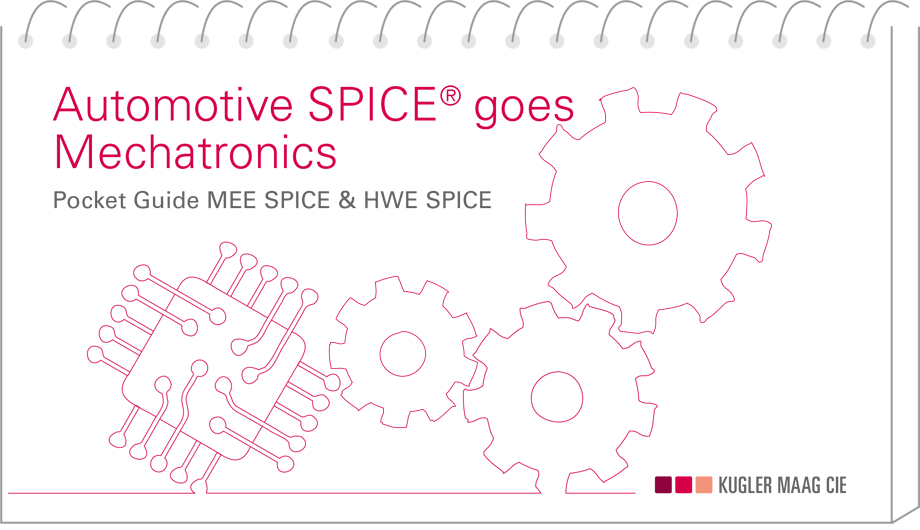
Learning Center
Do you want to acquire the knowledge to advance your career as an engineer? You've come to the right place in our Learning Center: Read our Automotive Insider blog or listen to Curious, our podcast with decision makers. Check out our tutorials for newbies in Automotive SPICE, functional safety and automotive cybersecurity. Step inside and find the answers to your questions.
Tutorial videos on cybersecurity for rookies
How to manage your cybersecurity activities
Here you learn how to with the UNECE regulations on cybersecurity by establishing a cybersecurity management system. In this video, we introduce you stept by step in the art of setting up an efficient CSMS.
The centerpiece of your cybersecurity activities
The UNECE regulations on cybersecurity require the establishment of a cybersecurity management system. This CSMS is relevant for homologation. In this video, we show you the challenges of setting up a CSMS. You will also learn about the main CSMS components.
The Nine2Five TARA Navigator
Risk assessments are the center-piece of cyberecurity-driven activities. With the Nine2Five TARA Navigator, we provide a proven approach for the elaborated TARA, Threat Analysis and Risk Assessment in the concept stage.
How to comply with the UNECE regulations
Wondering how to comply with UNECE cybersecurity regulations? Here you' ll find out about the management systems to set up and the certificates you are required to have for vehicle type approval.

Do you need to foster productivity or your product quality? Let's talk.
Let us know how we can reach you.
Tutorial videos on functional safety for rookies
ISO 26262 at a glance
In an introductory tutorial for first-time users, our expert Dr. Erwin Petry presents the ISO 26262 safety standard and explains the fundamental principles of functional safety.
Management
There is no functional safety without safety management! Learn how functional safety management covers the safety lifecycle – on an organizational level, in your development projects and after the start of production.
Concept phase
Come to know what you have to do in the concept phase (ISO 26262, part 3) – from item definition, adaptation of the safety life cycle, ASIL determination to the functional safety concept with FS objectives and the FS requirements derived from it.
System level
As a vehicle supplier, you are also responsible for functional safety issues at the system level. In this video, you will learn about the three relevant phases of the functional safety lifecycle: the technical safety concept, system and component integration and testing and, not to forget: verification.
Hardware level
How can you meet the safety requirements when developing hardware components? Watch the video to learn how you can make your development process compliant with ISO 26262 requirements.
Software level
Welcome to the heart of functional safety: In this comprehensive video, you will learn how you should develop your software components in accordance with ISO 26262 requirements.
Tutorial videos on Automotive SPICE management and support processes
MAN.3
With this tutorial for Automotive SPICE entry-level users, you will learn the three most important ways to realize the Project Management process in a manner that is correct and goal-oriented.
ACQ.4
In this tutorial for Automotive SPICE beginners you will learn the three most important aspects for implementing the Supplier Monitoring process appropriately and target-oriented.
SUP.1
The purpose of this tutorial for Automotive SPICE beginners is to show you three key aspects for implementing the Quality Assurance process to ensure that it is correct and target-oriented.
SUP.9
These tutorial for Automotive SPICE newcomers will explain the three most importend aspects to get the Problem Resolution Management process right.
SUP.10
Get to know the three essential aspects for implementing the Change Management process in a proper and target-oriented manner in this tutorial for Automotive SPICE beginners.
Tutorial videos on Automotive SPICE system engineering processes
SYS.2
A tutorial for Automotive SPICE first-time users will show you the three key areas for implementing the SystemRequirements Analysis process to achieve the desired results.
SPICE for Mechanical Engineering
Ready to use Automotive SPICE to develop a mechatronic system? In this video you will learn how the SPICE for Mechanical Engineering process model is structured to support both system and component development in the field of mechanical engineering.
In each session of the series, we examine a portion of the standards, discuss the expectations of the practices, and talk about common weaknesses. You can just be there: The session will take place in teams. Here you can register for free.
Next Session on the Lunch and Learn With Our Expert Assessors: Agile development can be ASPICE's best friend
Tuesday, April 9th, from 12-1pm EST
Register now for Lunch & Learn sessions with our experts assessors
Tutorial videos on Automotive SPICE software engineering processes
SWE.1
During this tutorial for Automotive SPICE beginners you will learn the most important aspects to implement the Software Requirements Analysis process accurately.
SWE.2
Through this Automotive SPICE newbie tutorial, you will learn three key aspects to focus on in getting to the point of logically building your software product and documenting this.
SWE.3
Dr. Vanamali takes you through this tutorial for Automotive SPICE rookies. He teaches you how to create a detailed design for your software components and then specify and implement the software modules.
SWE.4
In this tutorial for Automotive SPICE® beginners, you will be given the three most important aspects to verify your software units, and thus be able to prove that the requirements directed at you have been met.
SWE.5
This testing process is all about software integration and the testing of it: what does testing against the architecture mean, what testing strategies are required, and how do I ensure traceability and consistency? The best way to get to know this is to take a look at the video, isn't it?
SWE.6
In this Automotive SPICE beginners' guide you will learn the three most important points for implementing the SoftwareQualification Test process in a proper and target-oriented way.
SPICE for Mechanical Engineering
Ready to use Automotive SPICE to develop a mechatronic system? In this video you will learn how the SPICE for Mechanical Engineering process model is structured to support both system and component development in the field of mechanical engineering.
Corporate research: reports on surveys and studys
AGILE IN AUTOMOTIVE. STATE OF PRACTICE 2021
Five years after the hype. In the meantime, most car makers and suppliers have gained first-hand experience in the use of agile methods, and numerous initiatives have been launched. How have agile approaches changed the work in development units, in which engineering disciplines have agile approaches been able to establish themselves?
Agile approaches found their way into many areas, in software development, but also in hardware and mechanics. From individual pilots in courageous teams, there are now companies that are testing agile approaches up to the portfolio level. Agility in the supply chain is now an intensely debated topic on the agenda as well.
The users surveyed still perceive corporate culture (70%) as a major threshold: lack of management support (46%) or little willingness to try out new things (65%).
Surprising: The majority of even experienced agilists still do not believe that agile approaches can be combined with Automotive SPICE®, functional safety or even cybersecurity. To counter these prejudices, we have dedicated a detailed chapter to the integration of agile approaches with these regulations: Yes, you can.
Software Drives.
Software Drives 2030 is a series of studies looking at the software skills a company will require to succeed in the automotive industry in the future. These studies are based on in-depth interviews with experts and decision-makers in the automotive, IT and telecommunications sectors. Their responses were summarised to provide an overall picture. The 2017 report examines required key competences: What capabilities do suppliers need to cope with digital transformation in the automotive industry?
Digital transformation and connectivity are now in full swing in automotive industry. Programmes have been introduced to make changes on all fronts, from key digital projects to experiments with service-dominated business models. The shift towards service-driven business models is challenging how entire companies and systems are organised, yet succeeding as a service provider revolves around different principles compared to businesses that merely supply products.
As a result, digital transformation with respect to automobiles is a completely new challenge for the industry. As well as changing technology paradigms, it also changes factors relating to the underlying business logic, models, setups and workflows. This report – based on a management survey looking at ‘Software Drives. Digital Capabilities for Automotive Innovators 2030’ – shows how producers and suppliers will need to reorganise themselves in order to cope with digital transformation.

Whitepaper
With a delivery pipeline, a company can continuously deliver additional functionality to its customers at a rapid pace. Four key performance indicators support the capability to drive the delivery pipeline. These metrics have a direct impact on business performance and have been customized to support development of both off-the-shelf software (OTS) and cloud-based services, Software-as-a-Service (SaaS). In addition, the KPIs support a continuous learning process and allow benchmarking at both team and organizational level.
The paper was written by consulting expert Sergej Weber from Kugler Maag Cie in collaboration with Rainer Dammers, ETAS.
This whitepaper on the Challenges in System Engineering of Intelligent and Autonomous Systems explains in six steps the approaches that can be used by system engineers with the product design of embedded systems.
The paper was written by consulting expert Dr Michael Faeustle from Kugler Maag Cie in collaboration with Sky Matthews, Chief Technical Officer for the Internet of Things at IBM.
The internet of things creates networks between different functions within a company – a challenge to traditional thinking when it comes to the division of labour. Digital services should be designed on a multi-departmental basis. In a guest article for the IoT blog of Bosch.io, we show how BizDevOps can be leveraged to create a uniform UX.
We support you with:
- Improving quality and compliance while maximizing innovation and profitability by managing both product and project.
- Enhancing the techniques to manage new and complicated requirements in areas related to autonomy, ADAS, cybersecurity and other emerging technologies. We showcase solutions to ensure reliability, quality, usability and goal achievement.
- Developing end-to-end improvement concepts with the aim of striking the right balance between your business needs, your product and technology goals, and your organizational structures and workflows.
- Assessing background conditions and pinpointing potential areas of improvement.
- Applying new methodologies - like Agile and Team Experience and UX – while working with engineering teams to prioritize and manage projects.
